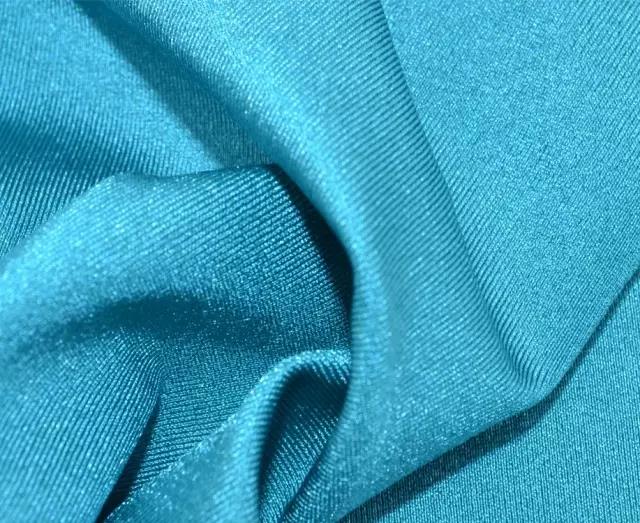Most of the composite fabrics use certain binder in the process, and it is difficult to remove the binder completely in the process of fiber composition quantification, which has a great impact on the accuracy of fiber quantification. Since it is difficult to remove the binder completely, the choice of different quantification methods and dissolution order has a great impact on the quantitative results.
Quantitative Analysis Methods
Quantification methods
When the sample cannot be quantitatively analyzed by splitting method, the main method standards used for the quantitative analysis of polyester and spandex dissolution are: FZ/T 01095-2002 "Test Method for Fiber Content of Textile Spandex Products", GB/ T 2910.12-2009 "Quantitative Chemical Analysis of Textiles Part 12. Polyacrylonitrile fibers, certain modified polyacrylonitrile fibers, certain chlorinated fibers or certain blends of elastic fibers with certain other fibers (dimethylformamide method)" and AATCC 20A-2014 "Fiber Analysis: Quantitative", which use 80% sulfuric acid method, dimethylformamide method and sodium hydroxide/methanol method for quantitative analysis respectively.
From the above three standards, the dissolution and quantification methods for composite fabrics containing spandex and polyester fibers have dissolved polyester fibers and dissolved spandex. When the samples contain binders that cannot be removed cleanly, the choice of different dissolution methods has a great influence on the accuracy of the composition quantification results.
Test protocol design
In order to make the specimens representative, three pieces of polyester spandex composite fabrics with different spandex contents were selected, and certain pretreatment methods were used, and then the samples were analyzed according to the standards FZ/T 01095-2002, GB/T 2910.12-2009 and AATCC 20A- 2014 for quantitative analysis. The results of component quantification were taken as the average of two parallel tests.

Pretreatment method selection
Combined with the pretreatment methods mentioned in Appendix A of GB/T 2910.12-2009, this type of composite fabric cannot be torn by hand without damaging the fiber due to the tight bonding, so the method of dissolution pretreatment is considered. Since the fabric contains spandex, it is not suitable for pretreatment of adhesive removal with dimethylformamide. For this type of composite fabric, dichloromethane and trichloromethane were selected for soaking, and it was found that the method of trichloromethane soaking combined with manual scraping to remove the adhesive was better, but the adhesive could not be completely removed cleanly, and the unclean adhesive was still visible on the textile fabric surface.
Differences in results between different quantitative methods
The three specimens that had been pretreated were quantified according to the standards FZ/T 01095-2002, GB/T 2910.12-2009 and AATCC 20A-2014.
From the test results, it can be seen that for the quantification of the composition of composite fabrics containing spandex and polyester, the results using GB/T 2910.12-2009 and AATCC 20A-2014 are relatively close, and there are some differences with FZ/T 01095-2002.
The main reason for the difference in the results of the three quantitative methods is that the solvents dissolve the binder to different degrees, and whether the dissolved binder content is included in the spandex content or in the polyester content has a different degree of influence on the final results.
1
The 80% sulfuric acid used in the standard FZ/T 01095-2002 is a strong acidic solvent. By observing the solution after dissolution and the residue of the surface material after dissolution, we found that the solvent can dissolve most of the binder when dissolving spandex, so it is equivalent to calculating the binder content into the spandex content in this method, resulting in high spandex content. It was also found that the lower the actual spandex content of the sample, the greater the error caused by this method.

2
When dimethylformamide of GB/T 2910.12-2009 was used for dissolution, it was found that there was still a large amount of binder on the residue.
3
The sodium hydroxide/methanol solution using the AATCC 20A-2014 method also dissolved part of the binder when dissolving the polyester fiber, and by observing the dissolved spandex only a very small amount of binder could be found remaining, and since polyester fiber is a relatively large part of the overall fabric composition, the influence of the binder on the final test results using these two methods is small.
Recommendation
Therefore, for the elastic composite fabric containing polyester and spandex, when conducting quantitative analysis, it is recommended to use appropriate reagents to remove the binder as much as possible during pretreatment. If the removal of binder cannot be completed, try to choose reagents with milder reaction with binder such as dimethylformamide for dissolution or choose to dissolve a larger portion of fibers (such as polyester).
Contact: Jeanne yang(MISS)
Phone: 13912652341
E-mail: [email protected]
Add: Room A2216/A2217,Double-Star Building,No 567 New South Middle Road, KunShan City JiangSu Province ,China.